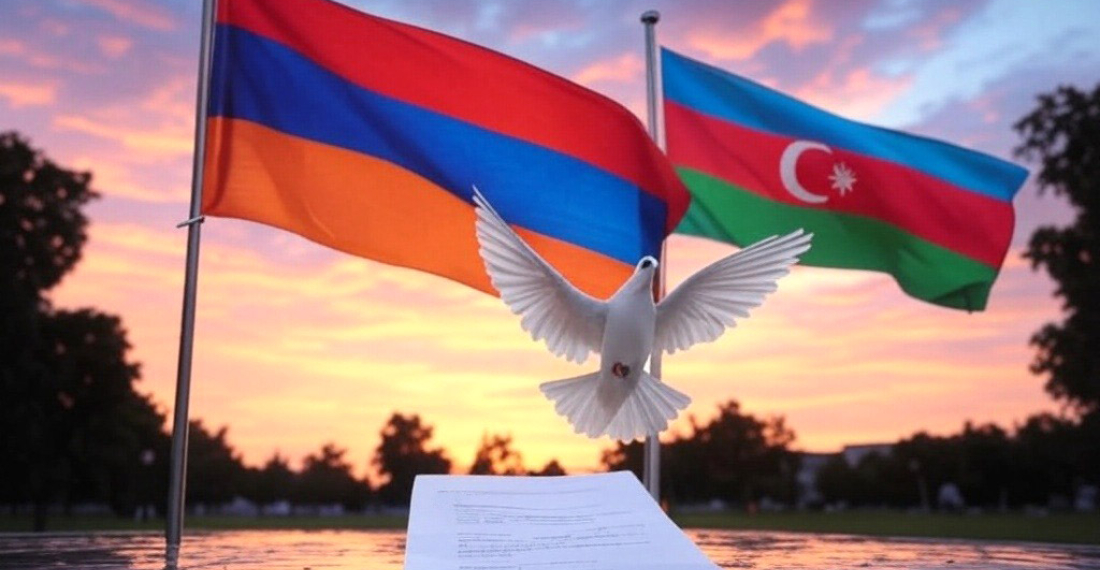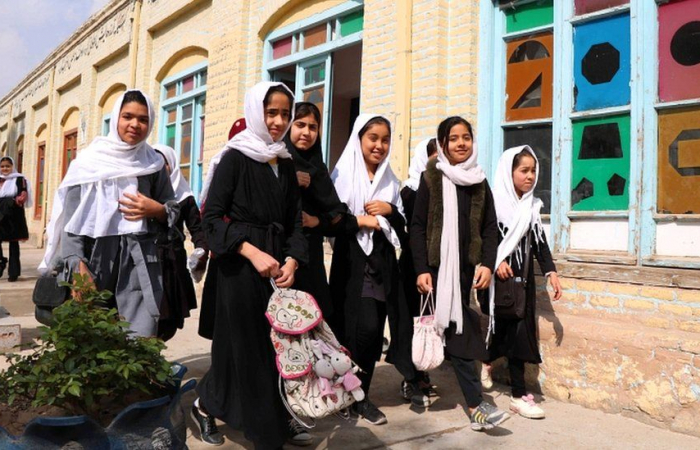South Caucasus, long haunted by unresolved conflict, may finally be on the verge of transformation. Nearly five years after the 44-day war reshaped the region, Azerbaijan and Armenia have taken historic steps toward peace.
The first signals of a peace treaty emerged during the 12th Global Baku Forum on March 13-15, 2025, when Azerbaijan's Foreign Minister Jeyhun Bayramov announced that the text of a long-awaited agreement had been finalized—a statement soon confirmed by Armenia's Ministry of Foreign Affairs. Months later, on August 8, 2025, in Washington, the leaders of both countries initialed the agreement in the presence of U.S. President Donald Trump, marking the most tangible progress toward reconciliation in decades.
Cautious optimism quickly spread across the region. Azerbaijan lifted its long-standing restrictions on the transit of goods to Armenia—a significant gesture of goodwill. Armenian Prime Minister Nikol Pashinyan sought to continue this positive trend, suggesting Yerevan's readiness to open a new transit corridor connecting Turkey and Azerbaijan. Yet many observers, excited by these developments, began questioning the reasons for the delay in formally signing the peace treaty.
Two longstanding obstacles help explain the delay: the dissolution of the OSCE Minsk Group and the preamble of Armenia's constitution, both known well before the Washington meeting. In Washington, the first obstacle was resolved when the leaders sent a joint appeal to the OSCE to end the Minsk Group process and related structures. The constitutional issue, however, remains unresolved and far more sensitive.
Armenia today finds itself trapped in a constitutional dilemma that is shaping the entire trajectory of its fragile peace process with Azerbaijan. At the center of the dispute lies a single reference in the Armenian constitution: a link to the 1990 Declaration of Independence. The declaration, drafted in the tumult of the Soviet collapse, contains explicit territorial claims to Karabakh that now hang like an anchor on Armenia's future.
For Baku, this isn't a symbolic quibble. Azerbaijan argues that as long as Armenia's supreme legal document contains language that contradicts Azerbaijan's territorial integrity, coexistence cannot be genuine and peace cannot be guaranteed. Its condition for moving forward is straightforward: remove the reference.
Critics of constitutional change fall into several distinct camps. The first—largely domestic opponents of Prime Minister Nikol Pashinyan—sees Azerbaijan's request as an external dictate and a dangerous precedent. For them, altering the constitution under foreign pressure amounts to a direct intrusion into Armenia's sovereignty. Some even present the debate in existential terms, warning that yielding on this point could erode the very foundations of Armenia's independence. Others argue that removing the clause technically doesn't prevent Armenia from making territorial claims in the future—a position that simultaneously seeks to discourage constitutional reform as pointless while undermining confidence in the peace process itself.
A third group acknowledges that the outdated language in the declaration complicates peace negotiations and that removing it might, in principle, be reasonable. Yet their anxiety lies elsewhere: in the political backlash. A referendum that fails—or one that merely exposes deep public resistance—could weaken Pashinyan's government ahead of the 2026 parliamentary elections and, paradoxically, jeopardize the peace process it aims to protect.
Peace is not merely a legal agreement but a transformation in how societies perceive each other and themselves. According to the scholar Alexander Wendt, relationships between states are constructed through repeated interactions and the meanings societies attach to them, not predetermined by geography or power alone. States can become enemies, rivals, or friends depending on how they interpret each other's intentions and actions over time. Armenia and Azerbaijan have been trapped in a self-reinforcing cycle of enmity for over thirty years, where each side views the other through the lens of threat and hostility. Every action taken by one side is interpreted by the other as confirmation of hostile intent, creating the very trap Wendt identified.
How societies collectively interpret current reforms matters profoundly: viewing them as imposed humiliation reinforces victimhood and perpetual conflict, while seeing them as strategic choices for peace and regional integration opens space for fundamentally different relationships to develop. Recent events confirmed how much interpretation matters. When the first grain shipment from Kazakhstan arrived in Armenia via transit through Azerbaijan and Georgia, it sparked public concerns about safety. This prompted the country's Minister of Economy, Gevorg Papoyan, to publicly declare his willingness to be the first to taste bread made from Kazakh wheat. While governments and foreign powers welcomed the lifting of transit restrictions, segments of the public interpreted it through a lens of suspicion and hostility. Such patterns of interpretation are common to all protracted conflicts, transcending any particular society
Before elaborating on the constructive value of a nationwide vote, it is important to note that the proposed constitutional changes do not focus solely on the clause referencing the Declaration of Independence. They include several long-discussed amendments aimed at strengthening Armenia's democracy and the rule of law—reforms that have been repeatedly encouraged by democratic institutions. The package therefore represents a rare opportunity to achieve multiple objectives simultaneously: alongside democratic reforms, it would enable a bold action toward Azerbaijan in terms of confidence-building and closing the conflict chapter, putting an end to the vicious cycle of blame and the political exploitation of the past that has kept Armenia locked in historical grievances, while sending a strong message to the diaspora and the world about the Armenia they want to build.
The Armenian–Azerbaijani conflict, which erupted in late 1987 and gained international attention by 1988, was a nationwide phenomenon from its inception. While intellectuals may have sparked the initial movement, it quickly evolved into a cause embraced across Armenia, the former Nagorno-Karabakh Autonomous Oblast, and the diaspora. Unlike some regional disputes, this conflict cannot be blamed on a narrow political elite—the broader public was deeply engaged from the start.
The contrast with Georgia's experience is instructive. Georgians view Russia as an occupying power, yet they direct their blame toward Moscow's ruling elite rather than ordinary Russians. This distinction has preserved everyday interactions between the two peoples. Russians consistently rank among Georgia's top tourists and investors, operating under an unspoken understanding: as long as they acknowledge Russia's occupation of Georgian territory, they remain welcome.
Unlike the dynamic between Georgia and Russia, the Armenian–Azerbaijani conflict involved ordinary citizens on both sides, making it impossible to attribute blame solely to a narrow political elite. Neighbors and colleagues confronted one another across battle lines throughout the 1990s. This perception was further entrenched—especially after the 2020 war—when the public witnessed the scope of devastation in Azerbaijani cities such as Aghdam, Fuzuli, Jabrayil, and Zangilan. Towns were leveled, and cemeteries desecrated, reinforcing among many Azerbaijanis the belief in collective culpability.
This collective dimension demands a collective response. Closing this conflict through a nationwide referendum would send an unmistakable signal to Azerbaijan: Armenian people are committed to ending enmity and embracing an era of cooperation and good-neighborly relations. Such broad-based participation would dramatically strengthen confidence-building between the two societies.
Without a referendum, peace risks being perceived as fragile and contingent solely on the current government in Yerevan, vulnerable to reversal with any change in leadership, whereas a decision endorsed by the Armenian people through nationwide vote would carry credibility that demonstrates genuine societal commitment to transformation rather than mere tactical maneuvering.
A nationwide referendum would also carry profound implications for Armenia’s internal politics. In countries where institutions and institutional continuity are weak, a troubling pattern tends to emerge: each new leadership seeks to delegitimise its predecessor—especially on foreign and security policy—because acknowledging continuity can be politically costly, and former leaders often remain potential rivals. This dynamic is already visible in Armenia. Former presidents blame Prime Minister Nikol Pashinyan for the 2020 defeat, while Pashinyan, in turn, has consistently attributed the loss in Karabakh to Armenia’s three previous presidents. Without a popular mandate, future administrations would enjoy similar freedom to exploit the peace agreement, portraying the current government as weak or even treacherous for signing it.
A further opening for political manipulation lies in the results of the 2021 parliamentary elections, held only months after the 2020 war. In that election, 1,281,997 voters—nearly half of all eligible voters—participated, and the ruling party secured 54% of the vote, amounting to 688,761 ballots. In the absence of a nationwide referendum, opponents could challenge the legitimacy of any peace agreement by arguing that it does not truly reflect the will of the Armenian people. A referendum, however, would root the peace process in collective consent, making it far more difficult for future political actors to weaponize the issue.
More importantly, a referendum could help liberate Armenia's political discourse from its obsession with the past. Rather than endlessly pondering on history and assigning blame, the country could pivot toward a future-oriented vision—one endorsed not by a single administration, but by the Armenian people themselves.
Finally, a nationwide vote would send a powerful signal to both the diaspora and regional powers. The Armenian diaspora—scattered across the globe but particularly strong in the Western Hemisphere and Russia, and composed of highly successful individuals—often takes harder positions on geopolitical issues from the comfort of distant countries. A referendum would allow Armenians in Armenia to send an unequivocal message: the peace treaty and the establishment of good-neighborly relations are a collective choice, one that prioritizes a stable, peaceful, and strong Armenia over an isolated and heavily dependent one. This is a decision that belongs to those who live with its consequences.
While multiple scenarios are possible for how a peace agreement might ultimately be signed, one reality stands out: Armenia today faces a rare historic opening. It has the chance to shift from being a country whose 1,190 kilometers of a 1,422-kilometer international border remain closed to one that is fully open, reconnected, and engaged in cooperation and communication with all of its neighbors. This moment is not only about policy choices but about how opportunities are perceived and framed. As history has shown, the interpretation of such moments—whether as risks or as openings—will shape Armenia’s future far more than the circumstances themselves. The country now stands at a crossroads where its mindset, not just its geography, will determine its next chapter.
Source: Eldar Hamzali is a Research Fellow at the Center for Studies of the South Caucasus, specializing in political processes, regional security, and international relations in the South Caucasus.
The views expressed in opinion pieces and commentaries do not necessarily reflect the position of commonspace.eu or its partners.





